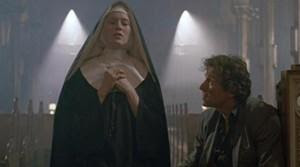
L' Enfer (Danis Tanovic, 2005)
English Title: Hell
Krzysztof Kieslowski's premature death gave us a treasure trove of great films (Decalogue (1989), Three Colors Trilogy (Blue, 1993; White, 1994; Red, 1995), The Double Life of Veronique (1991), etc.), including three unfinished screenplays (co-written with his long-time collaborator Krzysztof Piesiewicz) that forms a trilogy inspired by Dante Alighieri's Divine Trilogy. Heaven (2002), the first part of the trilogy, is directed by German helmer Tom Tykwer and is set in Italy, wherein a disgruntled woman accidentally kills innocent victims and later on escapes with a sympathizer and achieves a symbolic redemption in the end. The second part of the trilogy L' Enfer (Hell) is directed by Bosnian director Danis Tanovic, whose No Man's Land (2001) won him plenty of accolades worldwide, and is set in France wherein three sisters struggle with their disparate lives after a traumatic event during their childhood.
Much like what Kieslowski and Piesiewicz did with Decalogue and Three Colors Trilogy (wherein they stripped the ten commandments of their religious connotation, and the three colors of the French flag and their respective ideals of their political meanings), the three levels of the afterlife are removed of any of their Catholic dimensions, and what remains are basic human concepts that encapsulate these states in a completely human and worldly experience. In Heaven, it is redemption; a complete escape from the troubles that plague earthly life (that final scene in the film is both fantastical and yet completely understandable). L' Enfer, on the other hand, dictates a scenario of inescapable strife --- wherein strings of coincidences (or much more poetically, because of their destiny to have unfortunate lives) keep the three sisters from achieving a semblance of happiness.
It's more infernal than the typical descriptions of hell; while the French communes seem normal, actually sunny and pleasant at times, there is an unbearable sense of claustrophobia that traps these characters. The eldest sister Celine (Karin Viard) takes care of their physically incapacitated mom, suffers through a routine of taking the train from her apartment to the convalescent home (not to mention her self-imposed duty to fetch the daily papers and bread for her elderly neighbor), that when a handsome stalker Sebastian (Guillaume Canet) suddenly starts to hound through that routine, she fantasizes a romantic escape. In her masochistic sense of duty, she literally sleeps through opportunities for coincidences that might lead to her metaphorical redemption --- that same train conductor who lovingly observes her sleeping through the train ride.
Sophie (Emmanuelle Béart) gets obsessed with her husband's infidelity. She carefully follows her husband through his sexual escapades with a beautiful model; literally, consumes herself with the idea of punishing herself (and in a way, her two minor children) because of her husband's cheating. Their eventual separation connotes freedom from the inescapable repercussions of an unhappy married life; yet the reality of the matter is that, like her apartment that has been stripped off its beautiful decors and interiors, she has become empty and falsely complete.
The youngest sister Anne (Marie Gillain) is madly in love with her married professor (Jacques Perrin); she allows herself to be emotionally maltreated, be left unreciprocated with her immense romantic longings, with that fantastic idea that the professor would leave his family to be with her, taking in the idea that their getaway in Acropolis is as permanent a symbol of love as that of marriage and family. She symbolically releases herself through such longing, but in the end, that release is a mere facade, an unguaranteed repression, that will inevitably explode when the cruel tricks of fate seek to expose her true emotions.
It's a complex web of unhappy lives that Kieslowski and Piesiewicz paint; three separately told experiences that are devoid of any sense of redemption, thrown in a pit by fate and circumstance, enunciated by myth and literature as expressed through the Greek tragedy of Medea. While Heaven, the redemption may be conceived as cheaply constructed and maybe too easily realized, in L' Enfer, it's a doom that can be described as permanent and ravaging. The film dictates instances of possible escape (when the train conductor tries to announce her love by giving a gift to Celine, or the sisters' eventual reconnection), but again, fate and an unmistakable sense of human cruelty and emotional torture, get swayed in the equation that would make happiness elusive, or even impossible.
It's quite amazing how L' Enfer feels very much like a film directed by Kieslowski. The hues, the music motif, even little signature touches (the old lady trying to throw a bottle in a trach receptacle or that bee trying to escape from drowning), the overall atmosphere --- all these are Kieslowski-an in spirit. It felt like a departure for Tanovic (whose sense of satire made No Man's Land a rather involving political statement) who opens himself to be possessed by the great director's aesthetic and philosophical traits. And while the film is mostly melodramatic at times, there are quiet touches of black humor that surface throughout; the film is actually as interesting and as amusing as the bee struggling to get out of the liquid. But while the bee frees itself and flies to safety, the characters in this piece won't die and won't get freed --- they wriggle and strugglingly swim in a life-long emotional, mental, and philosophical emptiness as punishments inherited from a society rules over by an irrational god, or no god at all.






















_p1%20(wm).jpg)




























